Orthotics
Custom Orthotics
Custom orthotics are specialist insoles that provide structural support and improve foot function. They can be made to fit different types of shoes or for more specific shoe types, such as ski boots.
What issues can custom orthotics aid with?
The custom orthotics that are prescribed can assist with a range of issues including:
- Heel pain (plantar fasciitis)
- Achilles tendonitis
- Injuries
- Knee pain
- Back pain
- Tight calves
- Flat foo
- Bunions
- Corns
The orthotics can re-balance the feet to align the body, this in turn can aid with knee pain and back pain. They devices can also take pressure from certain areas of your feet that cause issues such as bunions and corns.
Physiotherapy may also be suggested in combination with custom orthotics.
How are the measurements of custom orthotics taken?
There are a few techniques nowadays. Traditionally, a foot impression or foot scan is taken to obtain a mould of the foot shape, and this is sent to an orthotic manufacturer.
The orthotics manufacturer receives the mould or scan with a prescription that has been made out by a podiatrist. They will then typically make it as per the prescription by vacuum forming, or now with recent technology they can even 3D print them!
At Podogo foot clinic, we typically take a 3D foot scan.
The different styles of Custom Orthotics
Custom orthotics can be transferred between different shoes, depending on the style of orthotic you are prescribed and the footwear. You can however have multiple pairs of orthotics designed for more specific footwear, this includes running shoes, football boots, sneakers, and dress shoes. The devices can be made half length and low profile, or full length with bulky support depending on the requirement and shoe they are to be worn inside.
Our podiatrists specialise in prescribing custom orthotics to meet each individuals needs. This will be determined following a biomechanical assessment and gait analysis.
What determines which type of orthotic is prescribed?
The rigidity of the shell needs to suit the foot and pathology. Sometimes a strong rigid shell is needed but other times this could be uncomfortable and requires a soft flexible shell.
There is also the option to make one section rigid and another soft. Pads can be added to further increase support in the different areas of the foot, or dents to offload areas. This can make a big difference to comfort and addressing problems.
The devices are made to help with foot function and to work with your footwear. A carbon shell is thin, light and durable but a polypropylene shell can absorb more impact during sport.
A full length pair will feel most comfortable in a running shoe but may not always fit in a sneaker, or dress shoe.
How long do custom orthotics last
The shells of custom orthotics usually last at least 3 years depending on use, and the top covers usually 1 to 2 years. When the top cover wears down, this can be replaced and you can reuse the same shell.
Care advice for custom orthotics
Keeping your custom orthotics dry by taking them out of your shoes, and ensuring the underneath is dry, will help. Don’t wash them in hot water as the glue may soften and encourage the materials to come unstuck.
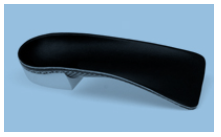
General Orthotics
For everyday walking shoes and activity, providing adequate structural support and comfort and fit in most shoe devices. Manufactured from light weight materials such as carbon fibre.
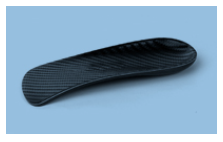
Dress Orthotics
Specifically designed for fashion shoes such as loafers, ballet pumps and low healed dress/court shoes. Dress orthotics are slim and low profile yet provide structural support.
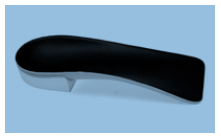
Sports Orthotics
These generally are manufactured from materials that allow more shock absorption and resist higher levels of forces. A variety of sports orthotics are modified for football, tennis, basketball/netball, running and even golf.
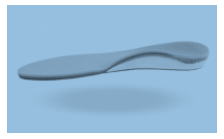
Diabetic Orthotics
Diabetic orthotics are proven to prevent ulcers by reducing shearing stresses. Specialist memory foam material have good evidence in prevention of pre ulcerative stages and ultimately limb salvage.
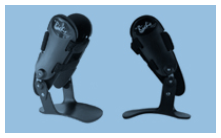
Ankle Foot Orthoses
Devices such as Richie braces are used for severe ankle and foot deformities and tendon ruptures. They also help in foot drop caused by a variety of neurological disorders.
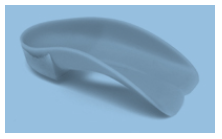
Children’s Orthoses
Whilst it may be normal for some children to have flat feet but severe paediatric flat foot is best when treated early. Paediatric orthotics can also help with in-toeing, habitual tip toeing as well as collapsed arches.
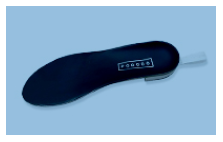
Ski Orthotics
Ski Orthotics are specialised supportive insoles, designed to protect foot health in cold and sporting conditions, with an easy tag to fit inside deep ski boots.
Frequently asked questions
What are the three types of orthotics?
Three types of orthotics are rigid, semi rigid and soft. The rigid device helps control the function of the foot. Soft orthotics help absorb shock and improve comfort. The semi rigid orthotics are a mix between the two.
Are orthotics good for your feet?
Orthotics can indeed be good for your feet. They can support the foot to improve balance and reduce pressure areas that are inflamed. They can also improve the biomechanics of your feet.
How long does it take to fix flat feet with orthotics?
Some flat feet are genetic and can’t be permanently changed so long term use may be needed. If you have flat feet related problems, orthotics can help you recover from your symptoms and sometimes are only needed for 6 months.
How many hours a day should you wear orthotics?
We usually advise you to gradually increase the use because it may take your feet time to get used to them. After 1-2 weeks you should be able to wear them all day long.
What are the benefits of foot orthotics?
Custom orthotics can improve your biomechanics and reduce fatigue. This should help you avoid developing aches and pains.